
A clear, beginner-friendly guide to how wireless EV charging works—from inductive power transfer to SAE J2954 safety standards.
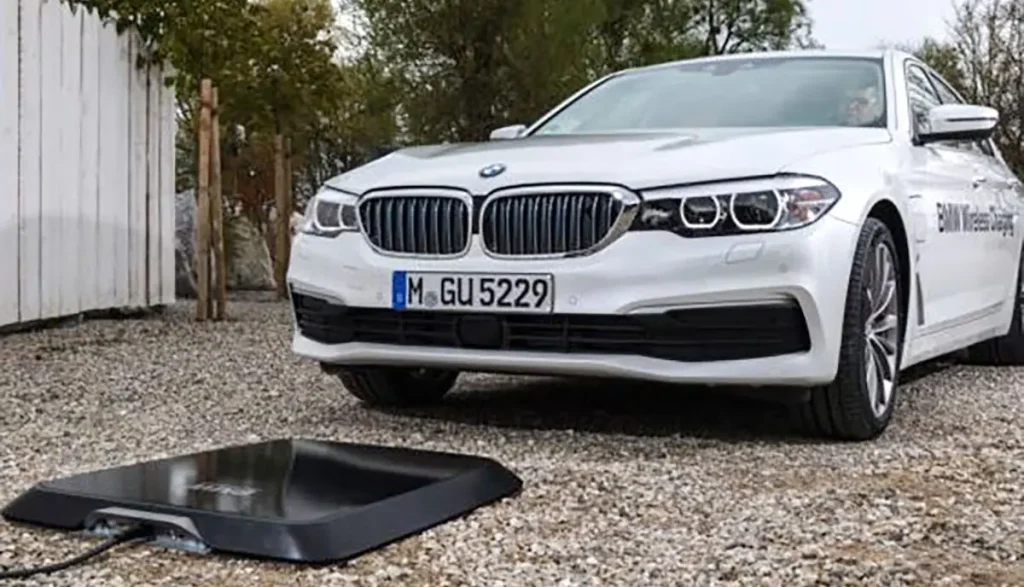
The idea of charging an electric vehicle without a physical cable sounds like something from a science‑fiction movie — essentially the core promise of modern wireless EV charging. You simply park your car in the garage, and it charges. No plugs, no fuss.
But how does it actually work? Well, it’s a sophisticated physics principle called inductive power transfer.
We’re here to break down exactly how it functions.
The Core Principle
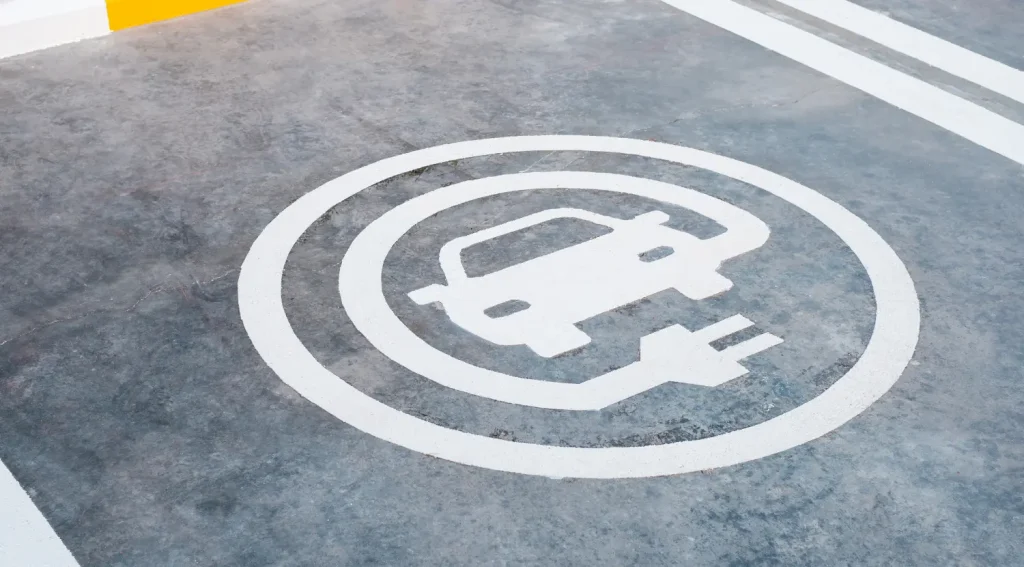
The technology here is almost certainly something you already use. It’s the exact same principle as the wireless charger for your smartphone or that sealed, waterproof base for your electric toothbrush, just scaled up… a lot.
The core concept is called Inductive Power Transfer (IPT).
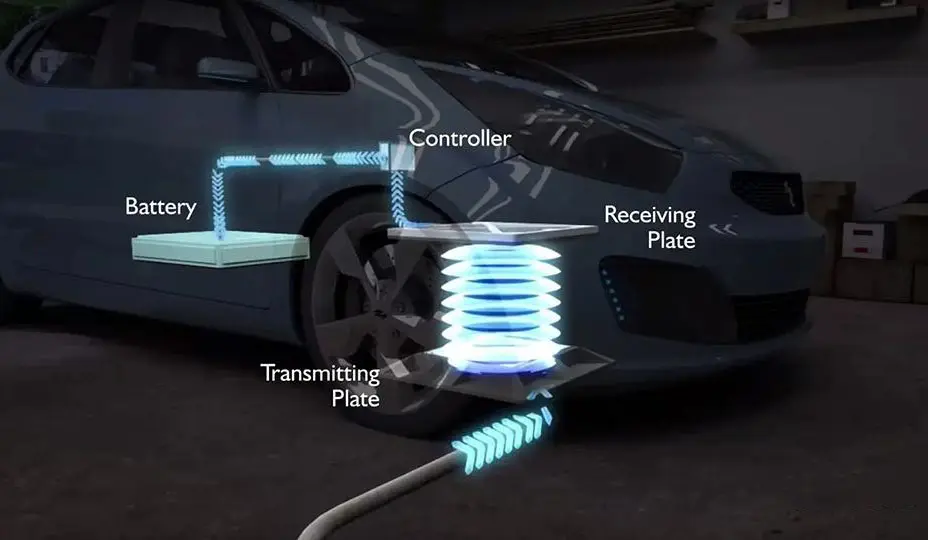
In laymen’s term, the physics works like this:
- A “transmitter” coil in a pad on the ground, when fed electricity, creates a fluctuating magnetic field.
- A “receiver” coil mounted on the underside of the car is parked above this pad, entering the magnetic field.
- This fluctuating magnetic field induces an electric current in the receiver coil.
- This newly created current is then captured, converted, and used to charge the vehicle’s high-voltage battery.
Having said that, there’s a crucial distinction to be made. While simple IPT is common, most modern, high-power EV systems use a more advanced type of IPT called Magnetic Resonance Charging.
Why the difference? We’d say it’s about solving real world problems. Simple induction requires very precise, very close alignment.
Magnetic resonance, on the contrary, adds capacitors to the coils to create a “resonant circuit” on both the transmitter and receiver. This allows them to transfer power much more efficiently, even with a larger air gap.
Let’s say, 150-250mm, between the pad and the car. Hence, it’s far more tolerant if you don’t park perfectly every single time. This is the technology that makes wireless EV charging practical.
The Key Components: A Look at the Hardware
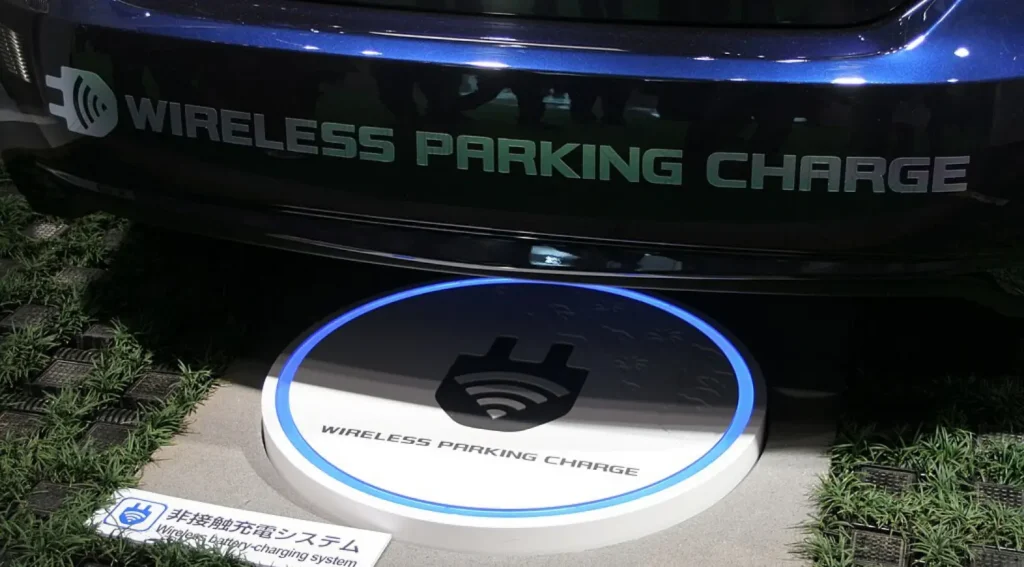
This is not just one piece of technology. In fact, it’s a sophisticated system of components that must all work together perfectly. When you install a wireless charging system, you’re really installing two main assemblies.
1. The Ground Assembly (GA)
This is the “transmitter” part. It’s a flat, durable pad that gets installed on or, in some cases, set into your garage floor or parking space. But it’s not just a coil of wire; it’s a complex piece of hardware. Inside, it contains the resonant coil and power electronics that connect directly to your home’s 240V circuit—the same kind of circuit you would use for a standard Level 2 EV charger or an electric dryer.
2. The Vehicle Assembly (VA)
This is the “receiver” pad that is professionally mounted to the underside of your electric vehicle. Albeit it’s designed to be robust, protected from road debris and weather, this is the part that skillfully captures the energy. From the VA, a cable runs to the vehicle’s onboard charger. The onboard charger then converts the incoming AC power from the pad into the DC power the battery requires.
3. The “Handshake” System
This is the invisible, digital link. The car and the pad must communicate before anything happens. This communication, often running over Wi-Fi or a low-energy Bluetooth connection, is the brains of the operation. This is not just for billing or smart features; it’s a non-negotiable safety protocol. The system must confirm that a compatible vehicle is present, that it’s aligned correctly, and that the car is ready to accept a charge before any high-voltage power transfer begins.
Also read: What Is Evse (Electric Vehicle Supply Equipment)?
From Parking to a Full Battery (Step-by-Step)
Let’s walk through the entire user experience, as this is where the practical details matter.
Step 1: Alignment (The Parking Part)

The first and, for the user, perhaps the most important step is parking in the right spot. How do you know you’re correctly aligned? This was a major problem in early systems, but modern ones have clever solutions. Many use a guide on the car’s infotainment screen, using sensors to show you when you’re in the sweet spot.
Others might use a simple, low-tech laser guide that projects from the garage wall onto your dashboard. We’d say this part needs to be effortless, and it’s getting there.
Step 2: The Digital Handshake
Once you’re parked and turn the car off, the GA and VA detect each other’s presence. They talk for a second. The pad confirms the car is SAE J2954-compatible (jump to the FAQs section for more on that). The car confirms its battery status and formally requests power from the pad.
Step 3: Safety & System Checks
This is the most critical part, and it happens in a fraction of a second. Before energizing the main coil, the system runs a crucial check for Foreign Object Detection (FOD). This system scans the area between the pad and the car. If it detects a foreign object—a wrench you dropped, a piece of metal debris, or in some systems, even a small animal—it will not energize. This is a non-negotiable safety feature to prevent any metal objects from heating up dangerously.
Step 4: Power Transfer
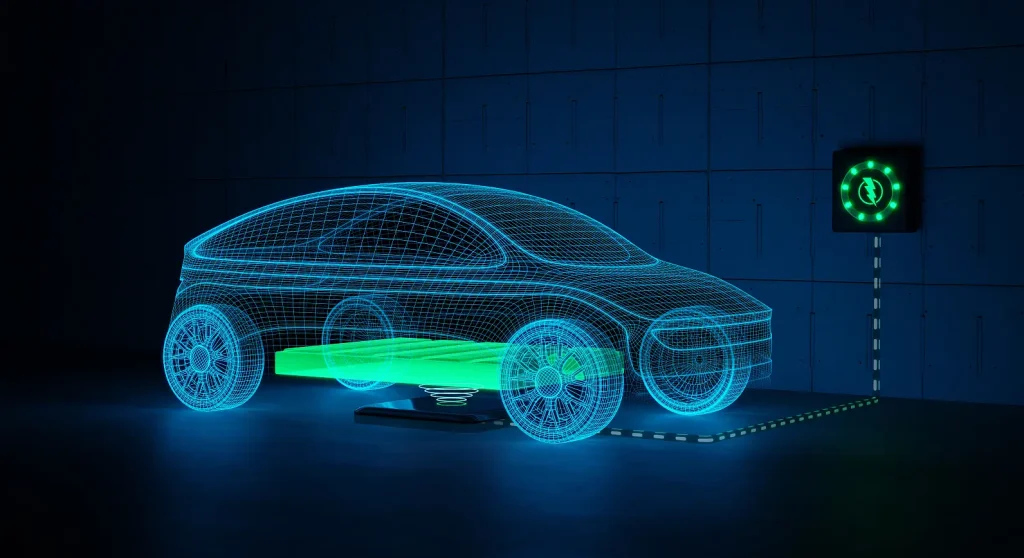
Once all checks are passed, the GA energizes the transmitter coil, creating the magnetic field. The VA on the car picks up this energy, the power transfer begins, and your car’s charging indicator lights up. The process has started, all without you ever handling a wet, dirty, or heavy cable.
The Future of Wireless EV Charging: Static vs. Dynamic
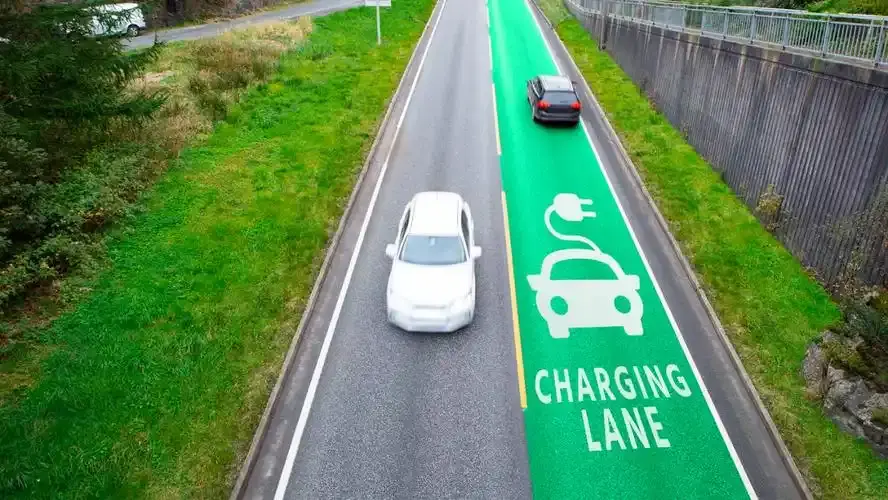
What we’ve discussed so far is Static Charging—charging while the vehicle is parked. This technology is here today. You can have it installed in your garage right now.
But the holy grail of wireless charging is Dynamic Charging.
Speaking of which, this is the concept of embedding charging pads into the road itself, allowing EVs to charge while driving.
Imagine a “charging lane” on the highway. This could, theoretically, lead to a future where EVs have much smaller, lighter, and cheaper batteries, as they could just sip power continuously on long journeys, thereby eliminating range anxiety forever.
Honestly, this is much further away. The technology is still in its infancy, being tested on short, dedicated routes for city buses or delivery fleets. The infrastructure cost is, as you can imagine, astronomical. Albeit it’s a fascinating long-term vision, static home charging is the reality for the foreseeable future.
In Closing
In a nutshell, wireless EV charging is definitively not a gimmick. The technology as of today is mature, safe, and, most importantly, standardized (thanks to SAE J2954).
The primary barrier to widespread adoption is not the technology; its cost and availability. It’s an expensive option, and for a while, it will likely remain a luxury feature for home users.
We’d argue, however, that while it’s a luxury for you right now, it’s essential for the future of automated transport. Think about self-driving taxis, autonomous delivery vehicles, and robotic fleet vehicles which cannot have a human plug them in at the end of a shift. They will require a robust, automated charging solution. Wireless charging is that solution.
Perhaps you would not need it today. But on the whole, you are looking at the standard for how all autonomous EVs will charge in the future.
Frequently Asked Questions (FAQs)
How efficient is EV wireless charging?
It is barely less efficient than a high-quality plug-in Level 2 charger. A good wired Level 2 charger might be 95-97% efficient at transferring power from the wall to the car. A modern, resonance-based wireless system is still typically 90-93% efficient. On the whole, the cost of convenience is minimal, amounting to perhaps a few cents extra per charge.
Is It Safe? What about EMFs, pets, or water?
● EMFs: This is a big concern for many. The magnetic fields used are low-frequency and non-ionizing. They are well within all established global safety standards (like those from ICNIRP). The fields are also contained and shielded, dropping to negligible levels just a foot or two from the pad.
● Safety: We come back to the Foreign Object Detection (FOD). The system is smart. It will not turn on if it’s unsafe. It’s designed to be safe around pets and people.
● Weather: These systems are built for the real world. Both the ground pad and the vehicle unit are sealed and IP-rated to be waterproof. They can charge through rain, snow, or ice. That said, the pad and vehicle underside should be clear of thick ice or heavy debris for best performance.
What if I buy a Ford and my partner has a Tesla? Will it work?
This is the single most important question for adoption. We’d argue that without a universal standard, the technology would be a gimmick. Thankfully, we have one: SAE J2954.
This is the global standard for wireless EV charging. It defines the frequencies, power levels, and communication protocols. It ensures interoperability—meaning any SAE J2954-compliant car (from any manufacturer) can charge on any SAE J2954-compliant pad. This is the plug and play standard that makes the technology viable for the public.
